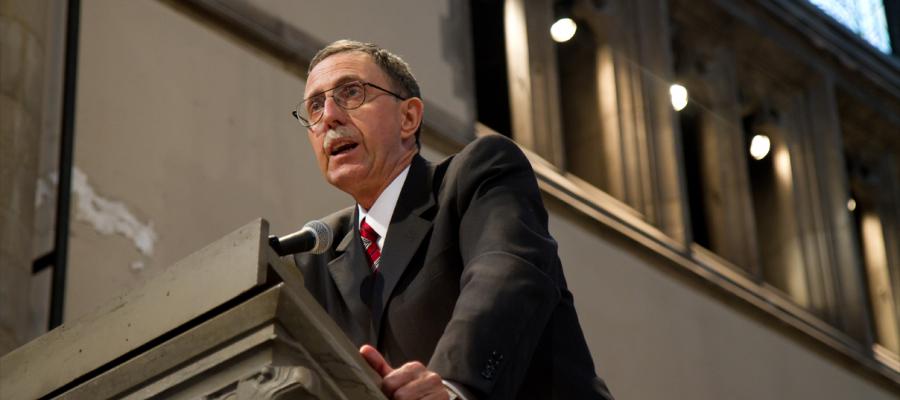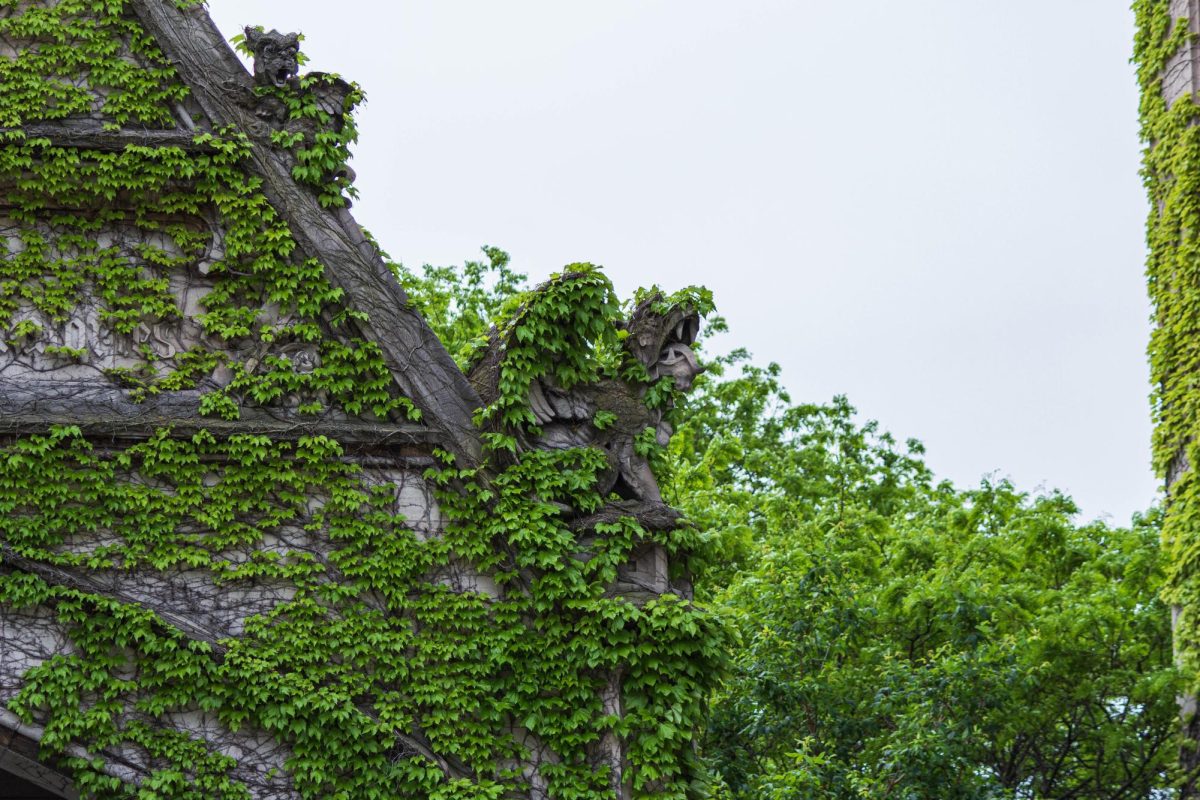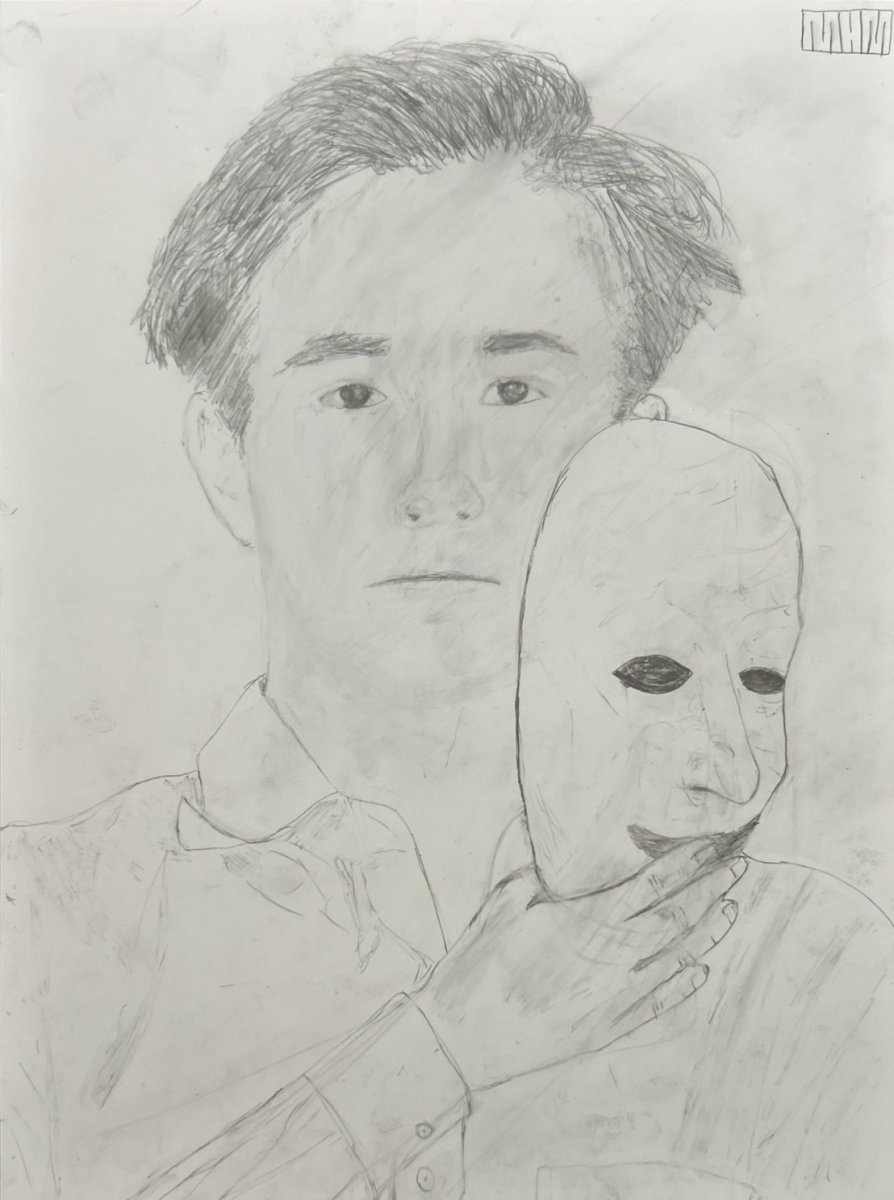I read with great interest The Maroon’s recent interview with my colleague and friend Cliff Ando about the state of the University today. Many of Cliff’s concerns have to do with the recent history of the University, especially the last two decades during most of which Robert Zimmer served as President. Having worked closely with Bob Zimmer and many other University faculty leaders and trustees over these years, I thought that I might share my views of where we have come and, equally important, where we are going.
The last 2o years have seen an explosion of exciting initiatives in the three major educational domains that constitute the heart of the University of Chicago—the College, graduate and professional education, and scholarly preeminence among our faculty. I will also address the University’s financial condition, which must be considered in the context of the successful investments in areas of fundamental academic importance.
First, consider the state of the College. Having experienced many decades in which its enrollments were far below those of our peer universities, the College now has a student population that constitutes nearly 50 percent of the regular, on-campus student body. The size and academic strength of the College’s applicant pool has dramatically improved, the University’s reputation has become more attractive for prospective applicants and their families, students have been more satisfied with their educational and social experiences, and in the 2019–20 academic year the undergraduate student body finally reached a size of 7,000 plus students, a level that places UChicago solidly within the middle of our Ivy Plus peer group. Over time, these trends have transformed UChicago into a school of first choice and led to significant improvements in student retention and yield in offers of admission as well: The College’s freshman retention rate was 89 percent in 1990, but had increased to 99 percent by 2014, a rate that has been sustained down to the present. In 1992, the College had an admissions yield rate of 31 percent, whereas in 2023, yield had increased to 89 percent, among the highest in the nation. These structural changes have also allowed the College to strengthen financial aid, to add additional instructional staff, and to contribute powerfully to the financial stability of the University. In turn the College has profited enormously from the resources of the wider University, drawing upon University investments in the campus at large, in new research facilities, in the Medical Center, and on our engagement with the Hyde Park neighborhood.
Most notably, amid all of these changes, we continue to recruit highly motivated and intellectually gifted College students with a strong love of learning. In combination, this larger, more-centered College has generated a flourishing profile of student-life and cocurricular programs that was impossible with a smaller undergraduate presence, in areas such as student career preparation, student research collaborations with faculty, major new resources in residential life, heightened student participation in the Arts and engagement with the city of Chicago, and an imaginative new model of international education that is embedded in the unique structures and rigor of our curriculum.
Second, professional education is not a recent phenomenon, but rather was integral to Harper’s conception of the University from the start. Harper had anticipated that the professional schools would be defined and managed by leading research scholars, and he further insisted that their curricular identities and programs be linked to other knowledge communities in the University. The Divinity School was the first professional school on the scene, followed by the College of Commerce in 1898, the School of Education in 1901, the Law School in 1902, the School of Social Service Administration in 1920, and the Graduate Library School in 1928. The Medical School followed in 1927, and, in more recent decades, Public Policy in 1987 and Molecular Engineering in 2011. Over the last two decades our professional schools have been strikingly successful, in large part owing to the curricular creativity, outstanding teaching, and the scholarly erudition of their faculties. In recent years the faculties of several of the professional schools have also joined colleagues from the arts and sciences in teaching College students. The decision of the professional schools to assume a more prominent role in undergraduate teaching came at my urging as dean of the College, with the strong support of the Offices of the President and Provost, not for reasons of revenue generation, but to afford our College students access to the brilliant men and women who teach in these schools. This development, which has made the faculty of the College much more a University-wide faculty, has been salutary and had nothing to do with financial upsides or downsides. Our students now have unique opportunities to “study across” the whole of the University, especially in their third and fourth years.
Third, the University has deployed considerable new resources to strengthen faculty scholarly achievements and curricular innovations and to encourage more interdisciplinary research collaborations in the graduate Divisions, both in the Humanities and the Social Sciences, as well as in the Natural Sciences, in Computation, and in Molecular Engineering. My colleagues in the Humanities and the Social Sciences publish each year an amazing number of field-defining books and articles that will have an enduring impact. The research accomplishments of colleagues in the Physical and Biological Sciences and in Molecular Engineering have been equally impressive. The University has provided massive financial support for new doctoral scholarship programs in the Division of the Humanities, the Division of the Social Sciences, and the Divinity School. Most, if not all, of the arts and sciences departments have eminent reputations as homes of distinguished and highly productive faculty scholar-teachers and accomplished doctoral students. Their collective success is a tribute to a faculty culture that is intolerant of mediocrity and insistent upon the highest international standards of scholarly achievement.
It is true, and I say this as a humanist who writes large, family-sized books on Central European history, who has his primary faculty appointment in the Social Sciences, and who was for many years the proud chair of one of our largest Core courses, the History of Western Civilization, that tenure-track faculty and, more recently, instructional professors in the Humanities and Social Sciences, who are dedicated and effective teachers, play a critical role in the College’s Core curriculum. But it is also true that following the major curricular reforms of 1998 that reduced the number of Core requirements, our students gained an enhanced number of free electives and greater agency to make use of them across the University, and they do so in all manner of fascinating combinations. We have seen rich new intersections between faculty research and teaching, including the founding of many new majors and minors in all four of our Collegiate Divisions, made possible by the increased flexibility of the Core curriculum adopted in 1998. It is also quite remarkable that of the five largest majors in the College, two (Computer Science and Mathematics) are in the Physical Sciences, and a third is in the Biological Sciences.
But focusing, as I have just done, on the enhanced eminence of these three major institutional domains—the College, the Graduate Divisions, and the professional schools—might cause us to lose sight of the fact that the University’s historic distinction comes not from the privileging of any one unit or set of units against others, but from a total ensemble. The University has always profited from the free flow of people and ideas across conventional disciplinary jurisdictions. This feature, which Harper idealized by insisting that Chicago is “one university,” has enabled our hot-house intellectual culture and bolstered the unity of the campus and its faculty. This expansive dedication to the practice of no-holds-barred inquiry has, in turn, made possible our historic commitment to freedom of expression.
Finally, if the University as a total institution is now in a significantly stronger position on the scholarly and student-life fronts, the fact remains that the progress of the last 2o years has been very costly from a financial perspective. The aggressive interventions of these decades—across all three of our major educational domains—have highlighted the continued need for enhanced financial support from Chicago’s several philanthropic communities, for major new investments in the University’s endowments for unrestricted undergraduate financial aid, and for new strategies to enlarge the scope of sponsored research at the University.
We must recognize the fact that among the very top private universities in the United States, UChicago remains the most undercapitalized, owing in large part to the fateful collapse of its undergraduate enrollments in the 1950s, 1960s, and 1970s. Virtually all successful universities depend in large part on the generosity of their undergraduate alumni to build a strong endowment. It may be difficult to imagine now that the College has grown to more than 7,000 students, but between 1950 and 1980 the College never rose above 2,760, and it languished around 2,200 students for much of that time—significantly below the College’s size before 1940. This produced a much smaller College alumni base compared to our peers, whose enrollments grew substantially in the 1960s, 1970s, and 1980s. To give but one telling example: in 1980 Chicago had 2,755 undergraduates, whereas Princeton had 4,430, Yale 5,241, Harvard 6,555, and Stanford 6,638. As a result, the University maintained a smaller endowment than it could have built with help from the many thousands of “missing” students from those decades.
That crisis in our demographic fortunes has now been overcome. But the story of UChicago’s eminence over the twentieth century has been one of constant struggles to achieve singular scholarly distinction in the face of unsettling fiscal headwinds. Our greatest challenge lies in generating new resources, for the future welfare of the University beyond the Zimmer years must address the ongoing need for new pathways to financial resource generation and endowment growth, while preserving the special intellectual culture of the institution.
The balance sheet on the recent decades is in my view remarkably positive. Faculty leaders across the University have thought strategically about advancing our common good, and they have had the courage to take formidable risks to achieve success.
John W. Boyer
Senior Advisor to the President and Dean of the College, 1992–2023









C M Naim / May 4, 2024 at 8:54 am
Since the university no longer publishes an old fashioned directory it has been impossible to fully grasp the size and nature of its administration for ordinary people. I, for one, would love to know just how many ‘Vice-Presidents’ we now have compared to, say, the ’80s, and inclusive of Additional, Extra, and any other subcategory.
Mark Zelek / Dec 9, 2023 at 2:37 pm
Following up on my earlier comment that the primary reason for the University’s financial distress relative to its peers was its adoption of a conservative endowment investing strategy, the University of Chicago News reported on December 8, 2023 that the endowment has further shrunk to $10 billion at the end of FY 23 (down from $10.3 billion at FY 22 end). Most significantly, the News noted that over the past 10 years the endowment has generated annualized returns of only 7.3 percent. This contrasts with, for example, Yale’s 10.9 percent, Princeton’s 10.8 percent, and Stanford’s 9.4 percent annualized returns over the same decade. Had the University of Chicago simply followed an investment strategy more in line with those of these other universities, its endowment would be billions of dollars more today.
Matthew G. Andersson / Dec 7, 2023 at 6:39 pm
Mr. Boyer makes a fair point as to the density of college alumnae in any university, and its factor in financial yield; however his diagnostic of the problem–a modest endowment vis-a-vis peer institutions–is incorrect. Moreover, college yield is not a product merely of size but of composition. UChicago’s college lacks three key attributes: a full engineering suite; an undergraduate business trade major, and a scaled athletic program. This makes UChicago’s college more specialized in student self-selection criteria, and skews applicant attributes thereby to generally less commercial motivations. Most of all, the University’s shortfall in endowment however, stems from administrative type: it is overly academic; isolated from and inexperienced in business; and exclusively drawn from faculty Ph.D institutional culture. UChicago administration is not traditionally facile in capital raising, or configuring the institution to do so. This partly explains why it is utterly captured by and obedient to special interests–regardless of their motivations. It has the wrong people in the wrong jobs. Regards. ’96 Booth MBA
Mark Zelek / Dec 7, 2023 at 10:14 am
John Boyer blames the University of Chicago’s troubling finances “in large part” on low undergraduate enrollments over four decades age. But this distracts from the fact that the largest reason for the University’s dire financial condition relative to its peers is its conservative endowment investment strategy implemented while Mr.Boyer was the College Dean. This was addressed in an excellent November 8, 2018 Maroon piece by Editor-in-Chief Lee Harris. And, unfortunately, the damage inflicted on the University’s endowment by this conservative strategy has only deepened since 2018 as analyzed in an MPI Transparency Lab Analyst Commentary dated April 5, 2023.
Jacob Myrene / Dec 6, 2023 at 8:40 pm
Nahhh Boyer’s wilin’ we goin bankrupt y’all TEE HEEE 🙂
Mark Muchane / Dec 6, 2023 at 6:46 pm
To be honest, this piece does nothing to address the primary concern: that the University is now gutting the Social Sciences and Humanities to fund not just other academic ventures, but benefits for administrators (especially the President). It’s useful additional context, but as a part of the conversation it does nothing to meaningfully address the *present* material concerns.
David Gaballa / Dec 6, 2023 at 2:20 pm
I hope the University realizes that its best resource by far to generate endowment growth is the incredible alumni base. Many of us loved our time at UChicago, grueling though it may have been, but feel very little connection to the University as alumni. The school does a very poor job of making us feel valued and part of something larger that requires our continued participation. Throw big parties, bring us together, invite us to special events.
I compare notes with friends from Harvard and Stanford and Dartmouth, etc, and am always shocked at how extravagant their schools are in celebrating alumni. As they say, you have to spend money to make money.